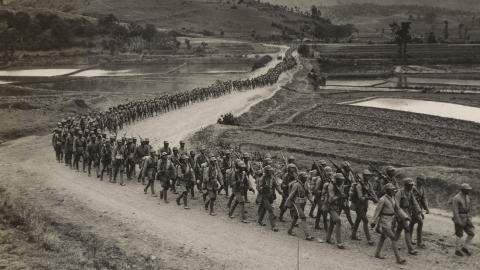The Channel Islands
The occupation of the five Channel Islands between June 1940 and May 1945 provide the only examples of how the British operated under Nazi occupation. Being of little strategic value, the British offered the islanders the option of evacuation, before leaving them defenceless. Some 30,000 islanders evacuated (one third of the total population). Others stayed, waiting to surrender.
Once the Germans were in control, they deported British born islanders and Jews, and then created the first, and only, concentration camps on British soil. Prisoners from these four camps were forced to create a network of defences. It's estimated that four out of 10 of these workers died.
Resistance was minimal, but persistent. Some islanders painted 'V' symbols onto German signs, and swastikas onto the homes of suspected collaborators. In response, the Germans simply painted swastikas onto multiple houses reducing their significance. Women who slept with the enemy were labelled 'Gerry-bags'.
The liberation of Europe meant the beginning of the end of Nazi rule, but it also cut supply lines. Without Red Cross food deliveries, many would have died from starvation. When an Allied task force arrived off Guernsey, this time it was the Germans who unconditionally surrendered.
















